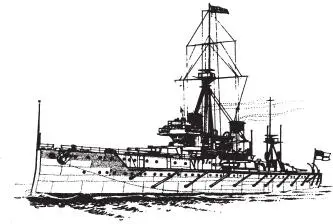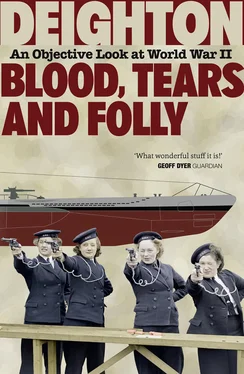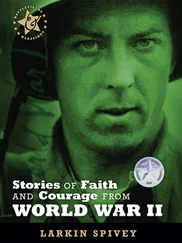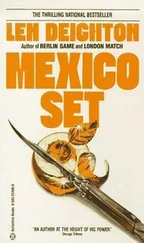Since the time of Nelson the cost of the Royal Navy had increased to a point where it tested Britain’s resources. Nelson’s ships were cheap to build and simple to repair. Needing no fuel, sailing ships had virtually unlimited range, and by buying food locally cruises could be extended for months and even years. But the coming of steam engines, screw propellers and turbines, together with the improving technology of guns, meant supplying overseas bases with coal, ammunition and all the tools and spares needed for emergencies. Full repairs and maintenance could only be done in well-equipped shipyards. A more pressing problem was the steeply increasing cost of the more complex armoured warships. In 1895 the battleship HMS Majestic cost a million pounds sterling but HMS King George in 1910 cost almost double that.
The time had come for Britain’s world role, its methods and its ships, to be totally revised. An alliance with Japan, and the recognition that cultural ties made war with the USA unthinkable, released ships from the Pacific stations. An alliance with France released ships from the Mediterranean so that the Royal Navy could concentrate virtually its entire sea-power in home waters facing the Germans. Germany had been identified as the most potent threat, and anxiety produced a climate in which talk of war was in the air.
Germany dominated Europe. Prussia, where in 1870 nearly 45 per cent of the population was under twenty years of age, dominated Germany. Otto von Bismarck (nominally chancellor but virtually dictator) had remained good friends with Russia while winning for his sovereign quick military victories over Denmark and Austria-Hungary. Then to the surprise of all the world he inflicted a terrible defeat upon France. Reparations – money the French had to pay for losing the war of 1870 – made Germany rich, universal conscription made her armies large, and Krupp’s incomparable guns made them mighty. After the victory over the French, the German king became an emperor and, to ensure France’s total humiliation, he was crowned in the Hall of Mirrors in Versailles. Bismarck now had everything he wanted. He looked for stability and was ready to concede the seas to Britain.
But in 1888 a vain and excitable young emperor inherited the German throne. Wilhelm II of Hohenzollern had very different ideas. ‘There is only one master in the country, and I am he.’ He sacked Bismarck, favoured friendship with Austria-Hungary instead of Russia, gave artillery and encouragement to the Boers who were fighting the British army in southern Africa (a conflict that has been called Britain’s Vietnam), spoke of a sinister-sounding Weltpolitik and, in an atmosphere of vociferous anti-British feeling, began to build his Kaiserliche Marine .
Despite Britain’s small population 4and declining economic performance, the strategic use of sea-power had given the British the most extensive empire the world had ever seen. Yet although a large proportion of the world lived under the union flag, Britain had nothing like the wealth and military power to hold on to the vast areas coloured red on the maps. Tiny garrisons and a few administrators convinced millions of natives to abide by the rules of a faraway monarch. The army’s strategic value was in guarding the naval bases where the Royal Navy’s world-ranging ships were victualled, coaled or oiled. Luckily for Britain, its military power was not seriously challenged for many years. Only when the Boers in South Africa erupted was Britain’s tenuous grip on its territories clearly demonstrated.
The German army on the other hand had shown its might and skills again and again, and having seen their army march into Paris in 1870 the German navy itched to test itself against the British. With almost unlimited funds at his disposal Rear-Admiral Alfred Tirpitz was to build for the Kaiser the sort of fleet that would be needed to challenge the Royal Navy. In anticipation of this moment, German naval officers more and more frequently held up their glasses and toasted ‘Der Tag!’ – the day of reckoning.
Admiral Tirpitz claimed to be unaware that his preparations were aimed at war with Britain. ‘Politics are your affair,’ he told the Foreign Ministry, ‘I build ships.’ 5And as if to prove his point he sent his daughters to study at the Cheltenham Ladies’ College in England.
The British were alarmed by the prospect of an enlarged German navy. Still more worrying for them was the rise in German trade, which went from £365 million in 1894 to £610 million in 1904, with a consequent increase in German merchant ship tonnage of 234 per cent. In fact Britain’s foreign markets were suffering more from American exporters than from German ones but – still smarting from Germany’s pro-Boer stance – the British resented the Germans, while Anglo-American relations on personal and diplomatic levels remained very good.
In December 1904 Britain’s new first sea lord, Admiral Fisher, started planning his new all-big-gun battleships. Although naval architects in Italy, America and Japan had all predicted the coming of a super-warship, this one was so revolutionary in design that it gave its name to a new category of battleship.
The big hull had spent only one hundred days on the stocks when King Edward VII launched HMS Dreadnought on a chilly February day in 1906. He wore the full dress uniform of an admiral of the fleet, which Britain’s monarchs favoured for such ceremonials, when he swung the bottle of Australian wine against her hull. The bottle bounced and failed to break and he needed a second attempt before the wine flowed, and the great warship went creaking and groaning down the slipway into the water.
She was completed in record time: one year and a day. The use of the rotary turbine, instead of big upright pistons, made her profile more compact and thus better armoured. According to one admiral the bowels of previous battleships were uncomfortable:
When steaming at full speed in a man of war fitted with reciprocating engines, the engine room was always a glorified snipe marsh; water lay on the floor plates and was splashed about everywhere; the officers often were clad in oilskins to avoid being wetted to the skin. The water was necessary to keep the bearings cool. Further the noise was deafening; so much so that telephones were useless and even voice pipes of doubtful value … In the Dreadnought , when steaming at full speed, it was only possible to tell that the engines were working, and not stopped, by looking at certain gauges. The whole engine room was as clean and dry as if the ship was lying at anchor, and not the faintest hum could be heard. 6

FIGURE 1
HMS Dreadnought
Gunnery was also changed. Ships armed with many short-range guns – exemplified by the 100-gun Victory – were no match for ships which could fire salvos of very heavy shells at long range. The big gun had proved itself. For the Americans sinking the Spanish ships at Santiago and Manila Bay, for the Japanese destroying the Russian fleet at Tsushima, the big gun had proved the decisive weapon. ‘Dreadnoughts’ – as all the new type of capital ships were now to be called – would have speed enough to force or decline a naval action. Furthermore the long-range gun would offset the threat of the torpedo; a sophisticated weapon that, wielded by dashing little vessels, threatened the future of the expensive warships.
The introduction of the Dreadnought design was a denial of Britain’s decline. It signalled that Britain had started to build its navy afresh, and that its sea-power could be equalled only by those who kept pace with the building programme. Almost overnight Admiral Tirpitz found his 15-battleship fleet completely outclassed. The Kaiser responded at once. SMS Nassau , the first of Germany’s Dreadnoughts, was ready for action by March 1908. On paper the German ships seemed inferior in design to the Dreadnoughts of the Royal Navy – for instance Nassau employed reciprocating engines and had 11-inch guns compared with HMS Dreadnought’ s 12-inch ones. But the Nassau’ s guns had a high muzzle-velocity, which gave a flat trajectory for better aim and penetration. The ship’s interior was very cramped, but top-quality steel was used as armour. Her small ‘honeycomb-cell’ watertight compartments made her extremely difficult to sink; a feature of most German warships.
Читать дальше













